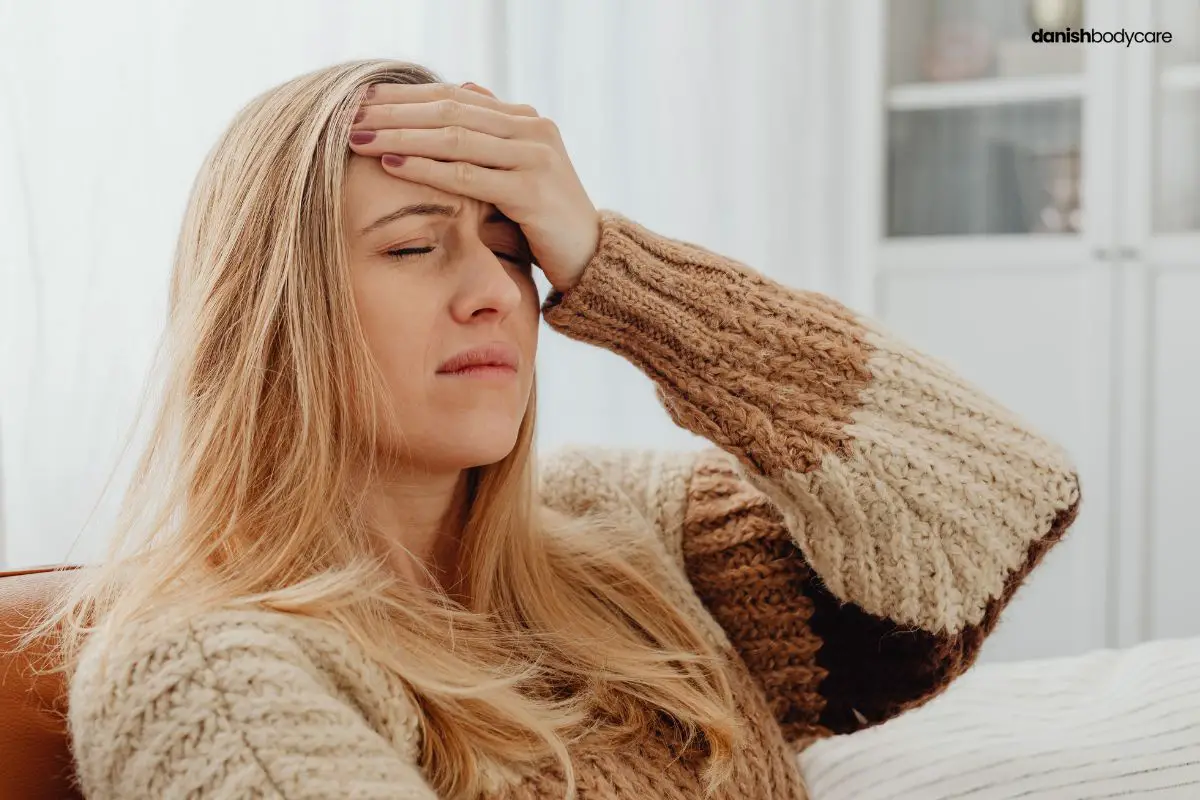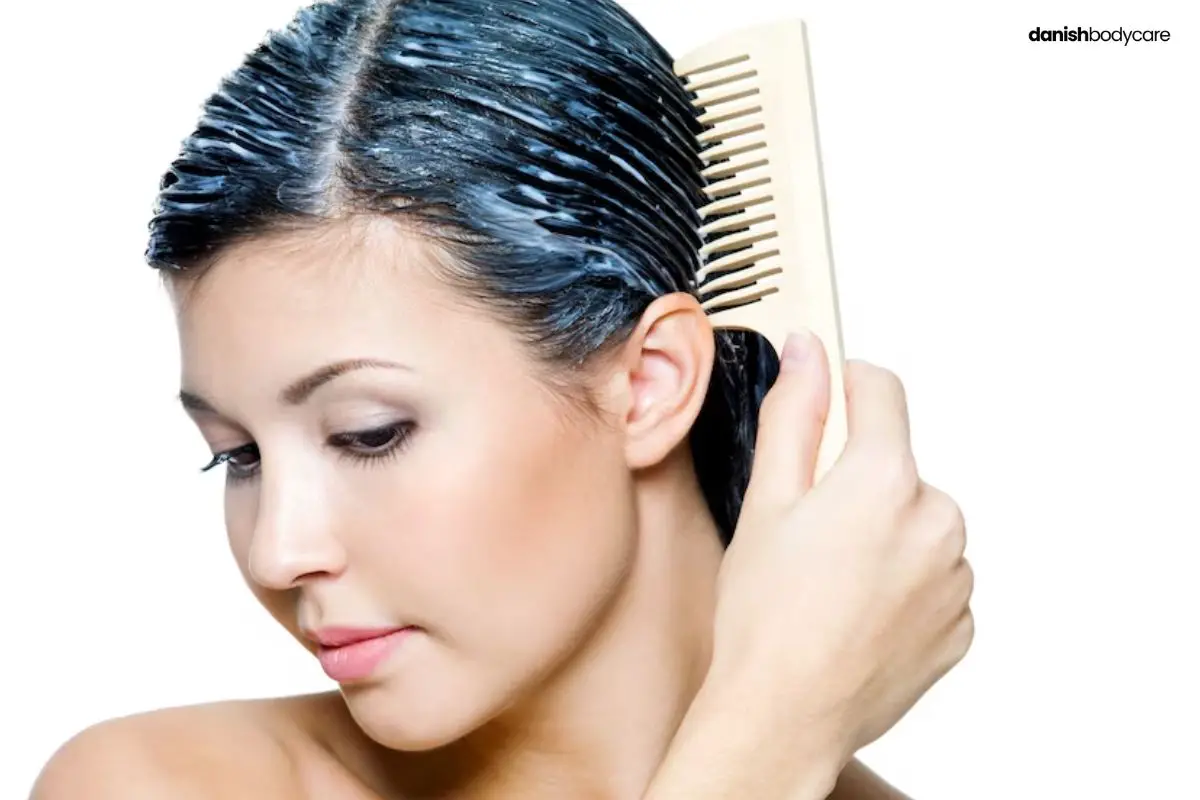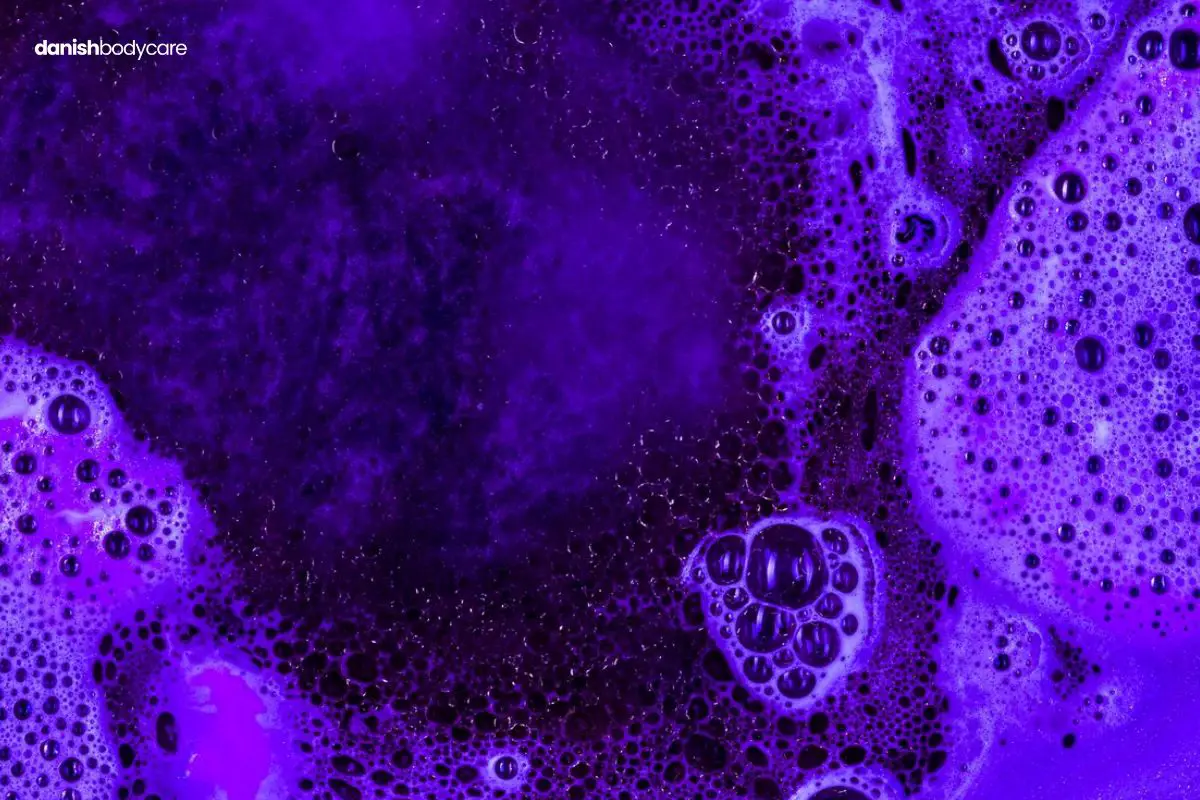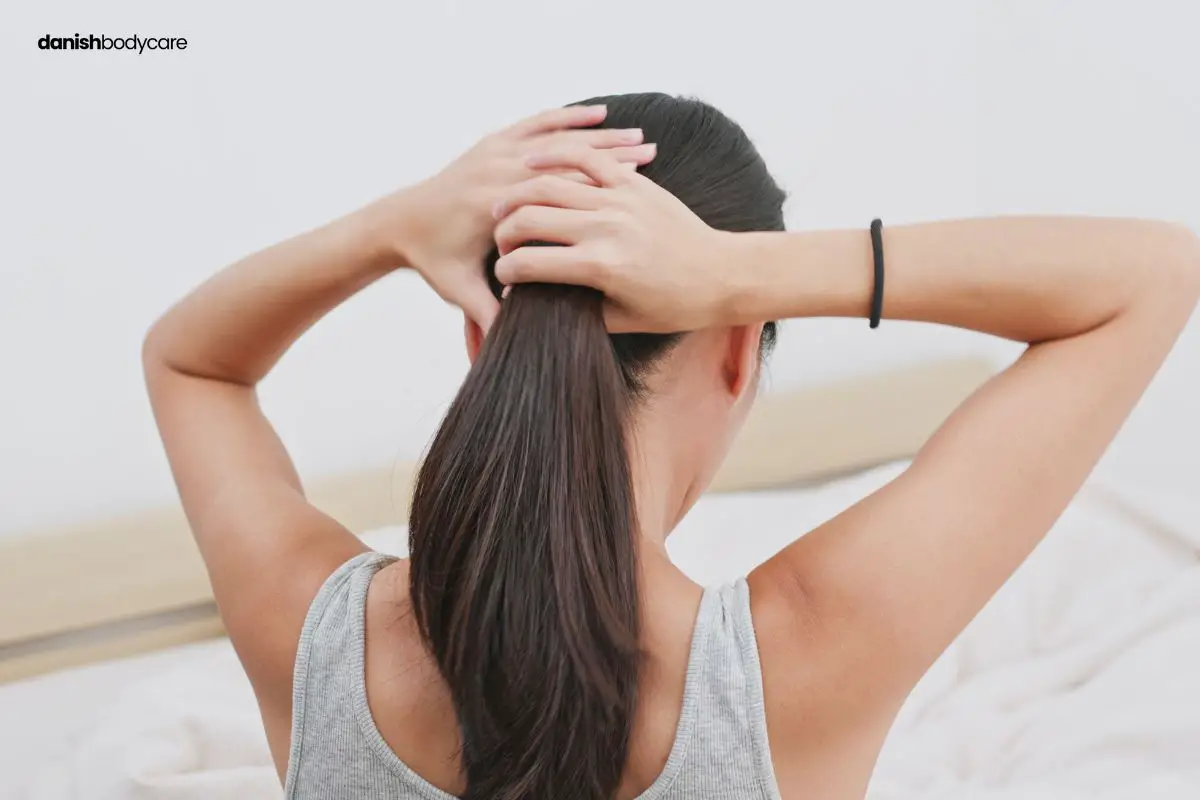“Headache after bleaching hair” is a concern that many face. Hair bleaching is a popular beauty trend. But it comes with side effects. One surprising outcome is a headache.
This article dives deep into this issue. We’ll explore the reasons behind it and ways to prevent it. It’s time to enjoy a new hair color without the added pain.
Why Does Bleaching Hair Sometimes Cause Headaches?
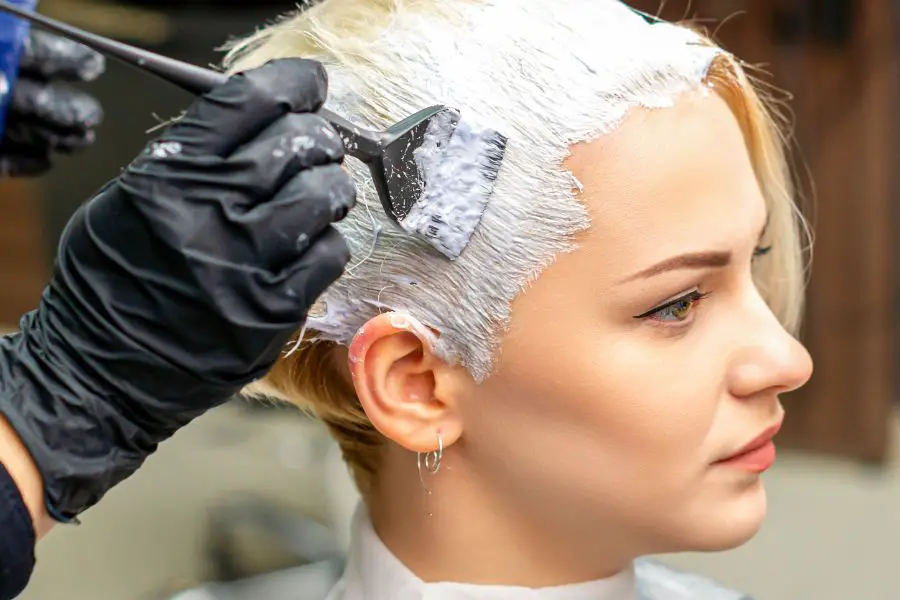
Headaches after bleaching your hair can be quite bothersome. It’s important to consider the potential causes. This helps you can take the necessary precautions. You will also be able to avoid any side effects of bleaching.
The primary reasons for headaches related to hair bleaching include:
- Certainly:
- Fume exposure
- Allergic reactions
- Physical strain
- Stress and blood pressure factors
- Over-stimulation of scalp
- Dehydration, fatigue, and skipped meals
- Pre-existing conditions or sensitivities
1. Fume Exposure
When you bleach your hair, you may be at risk of inhaling fumes that can lead to an uncomfortable headache. These fumes are chemical in nature and come from the bleach used in the process.
Inhaling these fumes can irritate your airways, making it harder for your body to get the oxygen it needs. This can then trigger a headache.
Hair bleach contains strong chemicals like hydrogen peroxide. These can lead to discomfort and headaches.
In some cases, fumes from bleach can also trigger migraines and other types of headaches. This is more frequent when you mix bleach with ammonia products. (Ontario Poison Centre).
| Tips for Reducing Fume Exposure | Description |
|---|---|
| Ensure Proper Ventilation | Work in ventilated areas; use open windows and fans to reduce fumes. |
| Use Protective Gear | Wear masks designed for chemical fumes. |
| Avoid Face Contact | Avoid touching face to reduce fume residue transfer. |
| Take Regular Breaks | Pause occasionally for fume exposure recovery. |
| Recognize Individual Sensitivities | Understand reactions vary; prioritize safety. |
2. Allergic Reactions
Allergic reactions may occur when you bleach your hair. Hair bleach contains chemicals that might cause irritation or an allergic reaction in some people:
- Ammonia
- Hydrogen peroxide
- Persulfates
Your risk for an allergic reaction increases if you have sensitive skin. It also increases if you have experienced a prior reaction to hair dye or other chemical products.
Recognizing Allergic Reactions
When you experience an allergic reaction after bleaching your hair, symptoms generally appear on your:
- Scalp
- Face
- Neck
- Other exposed areas.
Some common signs of an allergic reaction to hair bleach are:
- Redness and irritation of the scalp
- Itching and burning sensations
- Blisters or sores on the scalp
- Hives or rash
- Swelling of the face, lips, or tongue
- Difficulty breathing or swallowing
3. Physical Strain
Bleaching your hair can cause physical strain on both your hair and scalp. When you bleach your hair, powerful chemicals strip away the natural pigment. this causes the hair shaft to become more porous. This is also known as high-porosity hair.
It can lead to a feeling of dryness, itchiness, and even pain on your scalp.
At times, this physical strain may contribute to headaches as your scalp and hair try to recover from the aggressive treatment.
4. Stress and Blood Pressure Factors
Stress can be a significant factor in developing headaches after bleaching your hair.
When you’re stressed, your body releases certain hormones that can cause your blood vessels to constrict and tighten. This can lead to increased blood pressure, which can trigger a headache.
One type of headache that can result from increased blood pressure is a migraine. Migraines generate a throbbing or pounding pain, usually on one side of the head.
While bleach is not a direct cause, stress and increased blood pressure can exacerbate migraines.
Do this to help deal with stress and blood pressure factors related to headaches after hair bleaching:
- Practice relaxation techniques: Deep breathing, meditation, and progressive muscle relaxation
- Stay hydrated: Drink enough water before, during, and after your hair bleaching appointment.
- Take breaks: Ask your hairdresser for a short break to help reduce some of the pressure on your scalp.
5. Over-stimulation of Scalp
When you bleach your hair, your scalp can experience over-stimulation due to the chemicals involved in the process. This over-stimulation can lead to a certain type of headache called occipital neuralgia.
Occipital neuralgia occurs when your occipital nerves become inflamed. This causes symptoms like continuous aching, burning, and throbbing in your scalp.
The process of bleaching is harsh, and it’s common to feel a burning sensation on your scalp both during and after the treatment. This burning sensation results from the bleach’s chemicals irritating the scalp. This could be a sign of bleach burn.
6. Dehydration, Fatigue, and Skipped Meals
To cut the risk of over-stimulating your scalp, take measures to protect it during the bleaching process.
One way to do this is by applying a protective barrier between your scalp and the bleach. This will help reduce direct contact between your scalp and the bleaching chemicals.
Another way is to avoid bleaching too often. Frequent bleaching can lead to increased scalp sensitivity. This enhances the chances of experiencing headaches.
7. Pre-Existing Conditions or Sensitivities
If you have health issues or sensitivities, they may impact your hair bleaching experience. Some conditions raise the risk of headaches after bleaching. These include:
- Allergies
- Migraines
- Scalp conditions
- Sensitive skin
Allergies
If you have a history of allergies, you may be more susceptible to allergic reactions from the chemicals used in hair bleaching. These reactions can lead to headaches.
Before getting your hair bleached, consult a professional and perform a patch test to reduce the risk of an adverse reaction.
Migraines
If you suffer from regular migraines, be aware that the process of hair bleaching may trigger an episode.
It is advisable to discuss your migraine history with a professional before proceeding with hair bleaching.
Scalp Conditions
Existing scalp conditions are sometimes exacerbated by hair bleaching. these include:
- Dermatitis
- Eczema
- Psoriasis
Sensitive Skin
If you have sensitive skin, the chemicals in hair bleach may be harsh on your scalp, creating discomfort and headaches.
Communicate your sensitivities with your hairstylist. Also consider using a mild bleach formula or other alternatives.
Remedies for Post-Bleaching Headache
If you’re experiencing a headache after bleaching your hair, there are remedies you can use to ease the pain:
- Rest and relaxation
- Over-the-counter pain relievers
- Cool compress
- Hydration
Rest and Relaxation
Taking some time out to rest and relax can help relieve your headache. Find a quiet, dark room where you can lie down and close your eyes.
Ensure there are no distractions, such as loud noises or bright lights, which can intensify your headache. Focus on taking slow, deep breaths and letting yourself unwind.
Over-the-counter Pain Relievers
If needed, over-the-counter pain relievers such as Ibuprofen, Naproxen, or Acetaminophen can help.
Follow the instructions on the package, and never exceed the recommended dosage.
Avoid using aspirin if possible, as it might irritate your scalp after a recent bleaching treatment.
Cool Compress
Applying a cool compress to your forehead or the back of your neck can help reduce headache pain. You can use a cold pack or wrap ice cubes in a towel.
Place the compress against your skin for 10-15 minutes, and then remove it for a while. Repeat this process as needed to help ease your headache.
Hydration
Staying hydrated is important for health and can help with headache relief. After bleaching your hair, make sure to drink plenty of water throughout the day.
Avoid consuming alcohol or caffeine, as they can contribute to dehydration and worsen your headache.
Prevention Methods for Headaches after Bleaching Hair

Bleaching your hair can sometimes cause headaches, but there are ways to prevent this from happening. Here are some steps you can take:
- Perform a patch test
- Choose the right product
- Work in a well-ventilated space
- Stay hydrated
- Apply bleach to loose hair
Perform a Patch Test
A patch test helps you determine if you have an allergy or sensitivity to the chemicals present in the bleaching product. It’s a simple test that involves applying a small amount of bleach mixture to a discreet area of your skin.
If you experience irritation, redness, or any other adverse effects, avoid using the product on your scalp. This may lead to irritation that can trigger headaches.
Choosing the Right Product
Selecting a hair bleach product with a gentle chemical composition will cut the risk of scalp irritation and headaches.
Look for formulations that contain added oils or soothing ingredients like aloe vera to help protect your scalp.
Consider alternatives like hydrogen peroxide or henna if you’re prone to contact dermatitis.
Well-Ventilated Space
Strong fumes from hair bleach can cause headaches or exacerbate existing ones. To prevent this, ensure you’re working in a well-ventilated space.
Open windows and doors or use a fan to circulate fresh air. This will help dilute the fumes and provide a more comfortable environment for your hair bleach application.
Staying Hydrated
Dehydration can contribute to headaches. Ensure you drink enough water before, during, and after your hair bleaching session.
Staying hydrated will not only help prevent headaches but can also improve your health and sense of well-being.
Loose Hair Application
When applying hair bleach, ensure your hair is loosely held and the bleach is not applied too to your scalp. This helps prevent the bleach from trapping heat, which can cause scalp irritation and result in headaches.
By keeping the hair application loose, you’ll be more comfortable throughout the process. This lessen the likelihood of experiencing a headache after bleaching.
Alternatives To Prevent Post-bleach Headaches
If bleaching gives you headaches, consider using semi-permanent dyes like henna. Henna is a natural dye derived from the leaves of the henna plant, Lawsonia inermis.
It’s a powder that you mix into a paste and applied to your hair. Henna doesn’t damage your hair and may even provide some conditioning effects.
Remember that semi-permanent dyes will fade over time. They usually last around 4 to 12 shampoos, depending on the brand you choose.
The good news is that you can reapply semi-permanent hair dyes without causing extra damage to your hair.
Keep in mind that henna and other semi-permanent dyes provide limited color options compared to permanent dyes.
Henna generally gives a reddish tint, but you can find products that add other natural ingredients to create a wider range of colors.
Ingredients To Look For
Besides henna, other natural and gentle ingredients to look for in semi-permanent hair dyes include:
- Indigo: This is another plant-based dye that can create blue to black shades. You can mix indigo with henna to achieve a shade of brown.
- Beetroot and carrot juice: These natural ingredients can give your hair a temporary reddish tint.
- Chamomile tea: It is a mild and soothing ingredient that can help to lighten your hair.
- Lemon juice: You can use lemon juice for natural, gradual lightening of your hair color.
When to Consult a Medical Professional

If you experience a severe headache after bleaching your hair, pay attention to other accompanying symptoms. Some symptoms to watch out for include:
- Difficulty breathing
- Confusion or trouble understanding speech
- Fainting
- High fever (greater than 102 F to 104 F or 39 C to 40 C)
- Numbness, weakness, or paralysis on one side of your body
- Unrelenting diarrhea
- Vision loss
- Weakness
These symptoms could indicate a more serious issue, and you shouldn’t ignore them. Contact a professional for help.
Frequently Asked Questions
Why do I feel dizzy after dying my hair?
Using products containing strong chemicals can sometimes cause dizziness. These include ammonia and hydrogen peroxide. Breathing in these chemicals may result in nausea or lightheadedness. To avoid this issue, make sure to use hair dye in a well-ventilated area, and take breaks if you start feeling overwhelmed by the smell.
Why does my head feel weird after dying my hair?
Your head might feel weird after dying your hair due to the chemicals in the dye interacting with your scalp and hair. Some people may be more sensitive to these chemicals. They could experience scalp itchiness or mild pain. If your scalp continues to feel strange or irritated after washing out the dye, consult a professional or a dermatologist for advice.
How long does hair dye stay in your bloodstream?
Hair dye doesn’t enter your bloodstream in significant amounts. Most hair dye chemicals interact with the outer layer of your hair and scalp, rather than penetrating deeper into your body. Some people might be more sensitive to these chemicals, and allergic reactions can occur. If you’re concerned about the absorption of hair dye into your body, consider using natural or less potent hair dye products.

